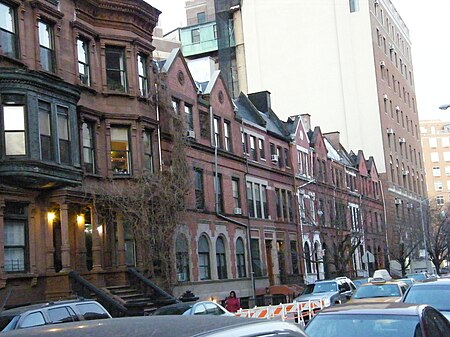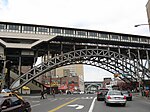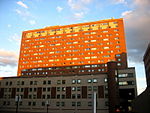Manhattan Avenue–West 120th–123rd Streets Historic District
Greek Revival architecture in New York CityHarlemHistoric districts in ManhattanHistoric districts on the National Register of Historic Places in ManhattanManhattan Registered Historic Place stubs ... and 5 more
Manhattan building and structure stubsNew York City Designated Landmarks in ManhattanNew York City designated historic districtsQueen Anne architecture in New York CityRomanesque Revival architecture in New York City

Manhattan Avenue–West 120th–123rd Streets Historic District is a national historic district in Harlem in New York City. It consists of 113 contributing residential rowhouses built between 1886 and 1896. The buildings are three story brownstone and brick rowhouses over raised basements in the Queen Anne, Romanesque, and Neo-Grec styles.It was listed on the National Register of Historic Places in 1992.
Excerpt from the Wikipedia article Manhattan Avenue–West 120th–123rd Streets Historic District (License: CC BY-SA 3.0, Authors, Images).Manhattan Avenue–West 120th–123rd Streets Historic District
Morningside Avenue, New York Manhattan
Geographical coordinates (GPS) Address Nearby Places Show on map
Geographical coordinates (GPS)
| Latitude | Longitude |
|---|---|
| N 40.808888888889 ° | E -73.955277777778 ° |
Address
Church of the Master
Morningside Avenue 81
10027 New York, Manhattan
New York, United States
Open on Google Maps









